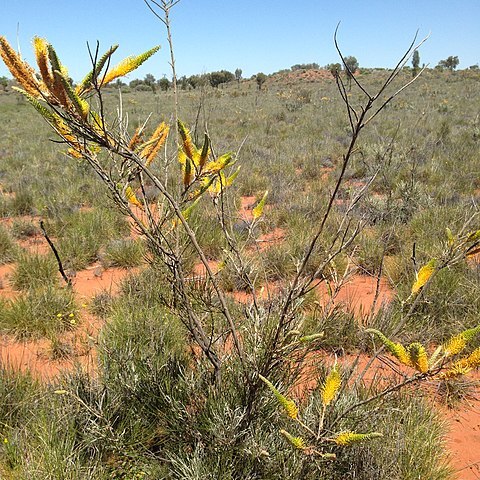A small to large spreading shrub. It can grow 1.5-5 m high and spread 2-4 m wide. The leaves are normally thicker near the ground. The branches are long and erect and slightly arching. These have fewer leaves. The leaves are long and wiry and segmented. The leaves are 15-20 cm long and divided into leaflets along the stalk. The flowers are towards the ends of these branches. The flowers are in woolly spikes. These are 20 cm long. The flowers are bright orange. The fruit are oval but flattened. They are 2 cm long and dark brown. They are densely hairy.


